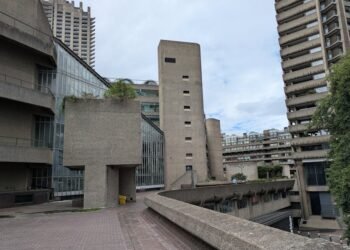Key Takeaways
- A detailed 3-day London itinerary that perfectly balances iconic landmarks with authentic local neighborhood exploration.
- Practical tips on navigating London’s public transport system, including the Tube, buses, and walking routes.
- In-depth guides to must-see attractions like Buckingham Palace, Westminster Abbey, the British Museum, and the Tower of London.
- Curated suggestions for dining, from traditional English pubs and afternoon tea to vibrant international food markets.
- Essential advice on budgeting, packing for London’s unpredictable weather, and securing the right travel insurance for your trip.
 Introduction
Introduction
Welcome to London! As a local who has spent years wandering these historic streets, I can tell you that there’s a certain magic in the air here—a palpable blend of ancient history and cutting-edge modernity. It’s a city that reveals itself in layers, from the grandeur of its royal palaces to the quiet charm of its hidden mews and bustling markets. Trying to see it all can feel overwhelming, but with the right plan, three days is the perfect amount of time to get a true taste of what makes this city so special.
This London itinerary is designed to be more than just a checklist. It’s a journey. We’ll walk in the footsteps of kings and queens, get lost in world-class museums, and discover the unique personality of London’s diverse neighborhoods. I’ve crafted this guide to help you experience the city as I do: with a sense of wonder, a bit of spontaneity, and an appreciation for both the famous sights and the quiet moments in between. So, grab a comfortable pair of shoes, and let’s explore London together.
Planning Your 3-Day London Itinerary
Crafting the perfect 3-day London itinerary is all about balance. You want to see the icons without feeling rushed, and the key to this is smart planning. The best time to visit is during the shoulder seasons—spring (April to June) and autumn (September to October). The weather is generally pleasant, and the summer crowds have either not yet arrived or have started to thin out. However, London has its own charm in every season, from festive Christmas markets in winter to blooming royal parks in summer.
To make the most of your three days, you need to be strategic. This itinerary groups attractions by location to minimize travel time and maximize your experience. Each day is a mix of major sights and more relaxed activities, giving you a comprehensive yet manageable taste of the city. Remember that London is vast, and you can’t see everything. Embrace the idea of leaving some things for your next visit—it’s the perfect excuse to come back!
Before you arrive, it’s wise to book tickets for major attractions like the London Eye or a West End show online. This not only saves you time queuing but can often save you money. Also, familiarize yourself with the public transport system. A Visitor Oyster card or using a contactless payment card is the most efficient way to get around. Finally, be flexible. While this itinerary provides a solid framework, don’t be afraid to linger longer in a place you love or take a detour down an interesting-looking street. That’s where the real magic happens.
Getting to London
London is one of the most connected cities in the world, served by six international airports. The two largest are Heathrow (LHR) and Gatwick (LGW). From Heathrow, the quickest way into central London is the Heathrow Express train, which takes just 15 minutes to Paddington Station. A more budget-friendly option is the Piccadilly Line on the Tube, which takes about an hour. From Gatwick, the Gatwick Express train will get you to Victoria Station in around 30 minutes.
Stansted (STN) and Luton (LTN) are popular hubs for budget airlines. Both offer express train services to Liverpool Street and St. Pancras International, respectively, with journey times under an hour. London City Airport (LCY) is the most central, located in the Docklands, and is connected via the Docklands Light Railway (DLR). No matter where you land, you’ll find clear signage for trains, buses, and taxis to get you into the heart of the city.
Planning ahead is crucial for getting the best deals on airfare. By comparing different airports and booking in advance, you can often find surprisingly affordable flights to London, leaving you with more to spend on experiences once you arrive. I always recommend checking flight comparison sites a few months before your intended travel dates to lock in the best prices.
Getting Around London
London’s public transport system is iconic and, for the most part, incredibly efficient. The London Underground, or the “Tube” as it’s affectionately known, is the fastest way to cover long distances. The network is extensive and color-coded, making it relatively easy to navigate. To pay, simply tap a contactless credit/debit card or a mobile payment device at the entry and exit gates. The system automatically calculates the best fare and caps your daily spending.
Don’t overlook the famous red double-decker buses. They are slower than the Tube but offer a fantastic, budget-friendly sightseeing tour of their own. Sitting on the top deck as you wind through historic streets provides a unique perspective of the city. Like the Tube, you can pay with a contactless card. Walking is, of course, the best way to explore individual neighborhoods and discover hidden gems you’d otherwise miss.
While London’s public transport is excellent, you might consider other options for specific needs. For instance, if you’re planning day trips to places like Windsor Castle or the Cotswolds, you might rent a car for a day. However, I strongly advise against driving in central London due to heavy traffic and the Congestion Charge. For getting around the city center, a combination of the Tube, buses, and your own two feet is unbeatable.
Day 1: Royal Sights & Classic Landmarks
Our first day is all about diving headfirst into the London you’ve seen in pictures. We’re talking about royalty, politics, and some of the most recognizable landmarks on the planet. It’s a day of classic sightseeing that will leave you in awe of the city’s history and grandeur. We’ll start with the official residence of the King, wander through a royal park, and end the day with breathtaking views over the River Thames. Prepare to be star-struck by London’s iconic skyline.

Morning: Buckingham Palace & St. James’s Park
There’s no better place to start your London adventure than at the front gates of Buckingham Palace. This iconic building is not just a tourist attraction; it’s the working headquarters of the monarchy. The sheer scale of the palace and the pristine Queen Victoria Memorial in front of it are truly impressive. If you time your visit right (usually daily in summer, and on select days the rest of the year), you can witness the Changing of the Guard ceremony. It’s a display of British pageantry at its finest, complete with red-coated soldiers and a marching band.
To get the best view of the ceremony, I recommend arriving at least 45-60 minutes early, as the crowds can be immense. Find a spot near the palace gates or along the Victoria Memorial for a good vantage point. For official ceremony schedules and to book a tour of the State Rooms during the summer opening, it’s always best to check the Royal Collection Trust website.
After the ceremony, escape the crowds with a leisurely stroll through St. James’s Park, the oldest of the city’s eight Royal Parks. It’s a beautiful green oasis with a serene lake, resident pelicans, and stunning views back towards Buckingham Palace. Follow the path towards Horse Guards Parade, where you can see the King’s Life Guard on horseback, providing another perfect photo opportunity.
Afternoon: Westminster Abbey & Big Ben
From St. James’s Park, it’s a short and scenic walk to the political and spiritual heart of the nation: Westminster. Here, you’ll be greeted by the magnificent sight of Westminster Abbey and the iconic Elizabeth Tower, home to the world-famous bell, Big Ben. The chimes of Big Ben are a quintessential London sound, and hearing them in person is a special moment.
Westminster Abbey is a masterpiece of Gothic architecture and a treasure trove of British history. It has been the site of every coronation since 1066 and has hosted numerous royal weddings and funerals. Inside, you’ll find the tombs and memorials of some of history’s most significant figures, from kings and queens to poets and scientists like Isaac Newton and Charles Darwin. You can explore on your own with an audio guide or join a guided tour. To avoid long queues, I highly recommend booking your tickets in advance from the official Westminster Abbey website.
Just across the street stand the Houses of Parliament, the seat of the UK government. While you can’t miss its stunning facade from the outside, tours of the interior are also available on certain days. Standing in Parliament Square, surrounded by these symbols of power and history, you truly feel the weight and importance of London on the world stage.
Evening: London Eye & South Bank
As afternoon turns to evening, it’s time to see London from a different perspective. Cross Westminster Bridge to the South Bank and head towards the London Eye. A sunset ride on this giant cantilevered observation wheel offers breathtaking 360-degree views of the city. Watching the sky change colors and the city lights begin to twinkle from 135 meters up is an unforgettable experience. The ride, or “flight” as they call it, takes about 30 minutes.
Again, booking your spot on the London Eye online is essential to save time and often money. After your flight, take some time to explore the South Bank. This vibrant cultural hub is always buzzing with energy. You’ll find street performers, food stalls, and a lively atmosphere as Londoners and tourists alike enjoy the riverside promenade. It’s the perfect place for an evening stroll.
For dinner, the South Bank offers a wide array of options, from casual eateries at the Southbank Centre Food Market to more formal restaurants with stunning views of the river and the illuminated Houses of Parliament. It’s a magical way to end your first, action-packed day in London, reflecting on the iconic sights you’ve witnessed.
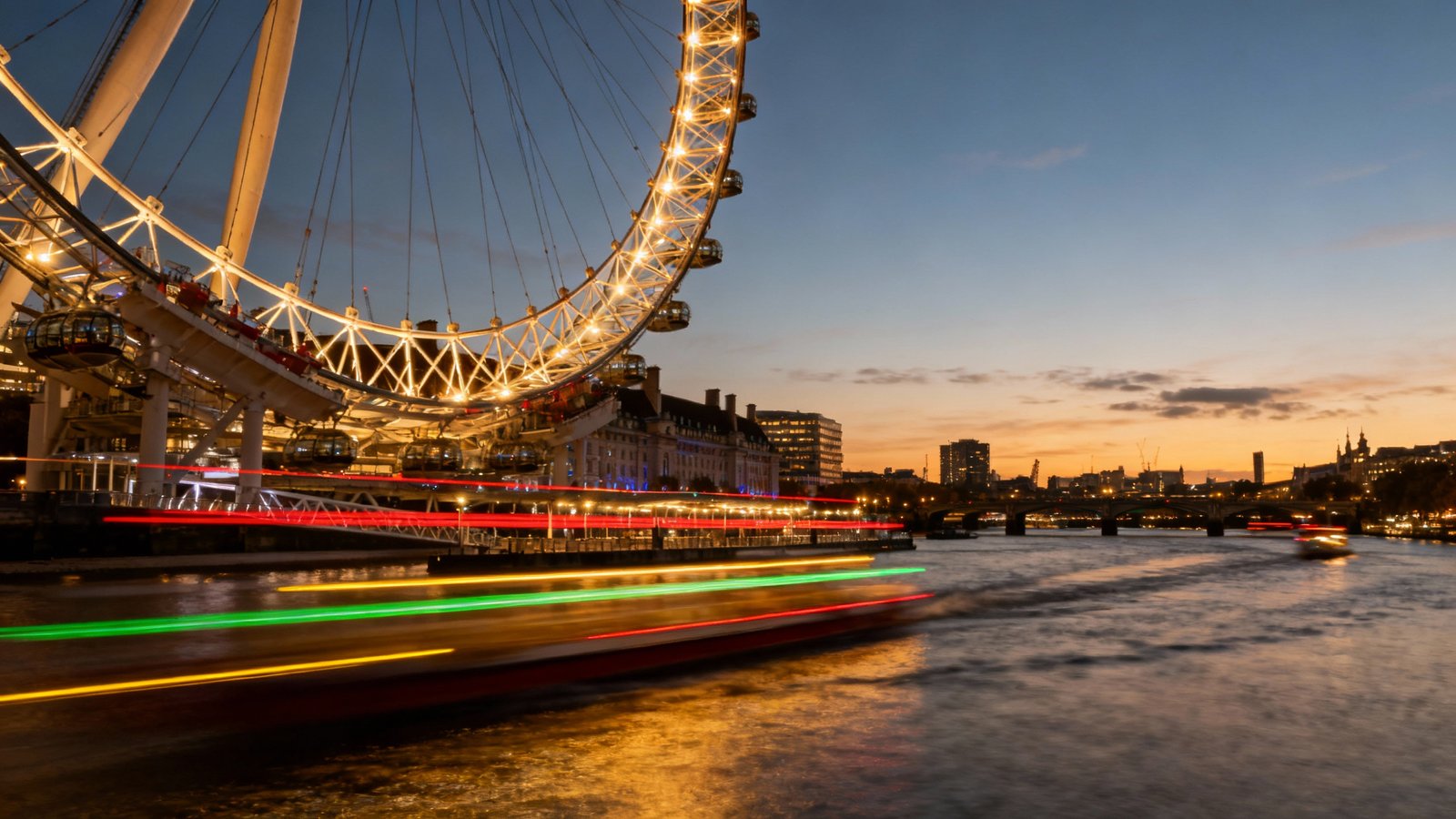
Day 2: Museums & Cultural Highlights
After a day of royal and political landmarks, our second day is dedicated to London’s incredible cultural and artistic treasures. The city is home to some of the best museums and galleries in the world, and the best part is that many of them are completely free to enter. Today, we’ll journey through human history, admire timeless masterpieces of art, and cap it all off with the magic of London’s world-famous theatre scene.
Morning: The British Museum
We begin our day of culture in the neighborhood of Bloomsbury at the magnificent British Museum. This institution is a true giant, housing a collection of over eight million objects that span two million years of human history, art, and culture. Walking into the Great Court with its stunning glass roof is an experience in itself. The sheer scale of the museum can be daunting, so it’s best to go in with a plan.
Don’t try to see everything. Instead, focus on a few key highlights. The Rosetta Stone, the key to deciphering Egyptian hieroglyphs, is an absolute must-see. The Parthenon Marbles (also known as the Elgin Marbles) from Athens are another highlight, though a controversial one. Other unmissable artifacts include the Egyptian mummies, the Sutton Hoo ship burial treasures, and the Lewis Chessmen.
While entry to the permanent collection is free, you may need to book a timed entry slot on the British Museum’s official website during busy periods. I suggest arriving right when it opens to enjoy a bit of quiet before the crowds build up. Grab a map and give yourself a solid three hours to explore your chosen galleries. It’s a truly humbling experience to be surrounded by so much history.
Afternoon: Trafalgar Square & National Gallery
From the British Museum, it’s a pleasant 15-minute walk south to Trafalgar Square, one of London’s most famous public spaces. Dominated by Nelson’s Column, guarded by four giant lion statues, and featuring beautiful fountains, the square is a vibrant meeting point and a hub of activity. It’s a great place to sit for a moment, people-watch, and soak in the atmosphere of central London.
Overlooking the square is the majestic National Gallery. Like the British Museum, entry is free, and it houses one of the greatest collections of Western European paintings in the world. Inside, you can journey through art history from the Middle Ages to the 20th century. You’ll find masterpieces by artists like Van Gogh (including his famous ‘Sunflowers’), Leonardo da Vinci, Botticelli, Rembrandt, and Turner.
Even if you’re not an art expert, the gallery is incredibly accessible. You can pick up a free map and follow one of the suggested highlight tours. Spending a couple of hours here is a wonderful way to immerse yourself in beauty and creativity. For information on current exhibitions and opening times, visit the National Gallery’s website.
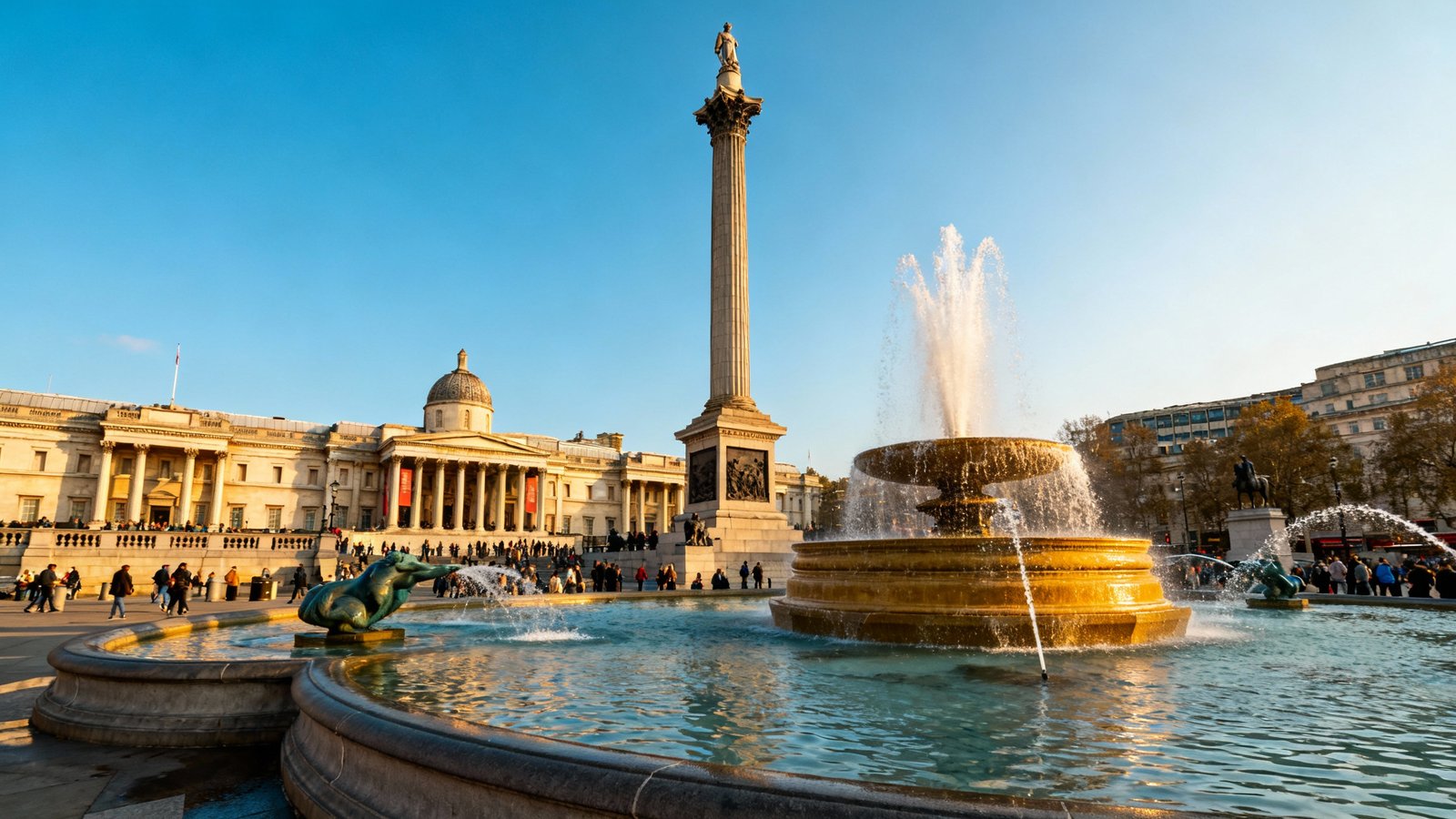
Evening: West End & Theatre District
As evening falls, we head into the heart of London’s entertainment world: the West End. This area, encompassing Leicester Square, Covent Garden, and Shaftesbury Avenue, is synonymous with world-class theatre. Seeing a show in the West End is a quintessential London experience, whether you’re a fan of blockbuster musicals, classic plays, or cutting-edge drama.
There are dozens of shows to choose from, with long-running hits like ‘The Lion King’ and ‘Les Misérables’ playing alongside exciting new productions. I recommend booking your tickets well in advance for popular shows, especially if you’re visiting on a weekend. However, you can sometimes find last-minute deals at the TKTS booth in Leicester Square for same-day performances.
Before your show, soak up the electric atmosphere of the area. Leicester Square is buzzing with cinemas and street performers, while nearby Covent Garden offers charming market stalls, high-end boutiques, and a plethora of pre-theatre dinner options. For a reliable way to see what’s on and book tickets, you can check a site like TodayTix, which often has great prices and mobile ticketing.
Day 3: Neighborhood Walks & Hidden Gems
For our final day, we’re stepping away from the grand landmarks to discover the real soul of London: its unique and characterful neighborhoods. This is your chance to experience the city like a local, wandering through colorful streets, browsing quirky markets, and finding those hidden gems that don’t always make it into the guidebooks. It’s a more relaxed day, but one that’s packed with charm and personality.
Morning: Notting Hill & Portobello Market
We start our day in the impossibly charming neighborhood of Notting Hill in West London. Famous for its pastel-colored houses, quaint mews, and, of course, the movie of the same name, this area is a photographer’s dream. Spend some time simply getting lost in the side streets, admiring the beautiful Victorian townhouses and leafy squares.

The heart of Notting Hill is Portobello Road, home to one of the world’s most famous street markets. While the full market (with antiques) is in full swing on Saturdays, there’s a vibrant market here every day of the week, with stalls selling everything from vintage clothing and jewelry to fresh produce and delicious street food. The energy is infectious, and it’s the perfect place to hunt for a unique souvenir.
Take your time browsing the stalls, and don’t be afraid to haggle a little at the antique stands. For those who want a more structured experience, a guided walking tour of Notting Hill can offer fascinating insights into the area’s history and point out famous film locations. Grab a coffee from one of the many independent cafes and just enjoy the bohemian vibe.
Afternoon: Camden Town & Regents Canal
From the chic pastels of Notting Hill, we take the Tube to a neighborhood with a completely different personality: Camden Town. Known for its alternative culture, live music scene, and sprawling markets, Camden is a feast for the senses. The moment you step out of the station, you’re greeted by shopfronts with giant 3D sculptures and a diverse crowd of punks, goths, tourists, and locals.
Explore the various markets that make up Camden Market. You’ll find the Stables Market, set in a former horse hospital, which is full of alternative fashion, vintage finds, and unique crafts. The main market by the lock is a fantastic place to grab lunch, with a huge variety of international street food stalls offering everything from Venezuelan arepas to Dutch pancakes. You can find more information on the Camden Market official site.
When you need a break from the hustle and bustle, take a walk along the peaceful Regent’s Canal. You can follow the towpath towards Regent’s Park for a lovely, scenic stroll. Or, for a unique experience, take a waterbus from Camden Lock to Little Venice. It’s a tranquil escape that shows you a completely different side of London.
Evening: The Shard & Thames River Walk
For our final evening, we’re heading back to the river for one last, spectacular view of the London skyline. This time, we’re going to the top of The Shard, Western Europe’s tallest building. The View from The Shard offers an unparalleled panoramic perspective of the city. Seeing London spread out beneath you from such a height, with the Thames snaking through it, is a truly awe-inspiring way to cap off your trip.
I recommend booking your tickets for The Shard’s viewing gallery for about an hour before sunset. This way, you get to see the city in daylight, watch the sun go down, and then witness the magic as millions of lights turn on across the capital. It’s a breathtaking spectacle that will stay with you long after you’ve left.
After a breathtaking sunset, you’ll be glad to have a comfortable place to rest. There are many excellent hotels in London near the river that offer convenience and amazing views. For your final London meal, the area around London Bridge and Borough Market (which has a different, more relaxed vibe in the evening) has some of the city’s best restaurants and historic pubs. A final walk along the south side of the Thames, with Tower Bridge lit up in all its glory, is the perfect farewell to this incredible city.
Food & Local Dining Suggestions
No trip to London is complete without indulging in its diverse culinary scene. For a classic experience, you must have a Sunday roast at a traditional pub. Near Westminster, The Red Lion is a historic pub that serves a fantastic version. For a quicker bite, London’s food markets are a paradise. Borough Market, near London Bridge, is the most famous, offering gourmet cheeses, fresh oysters, and the legendary Monmouth Coffee.
Afternoon tea is another quintessential British tradition. For a lavish experience, book a table at one of the grand hotels like The Ritz or The Savoy. For a more casual but equally delicious option, try the tea room at the Wallace Collection or one of the many charming cafes in Covent Garden. Don’t forget to try a classic fish and chips—you’ll find excellent ‘chippies’ all over the city, but Poppies in Spitalfields is a local favorite for its retro vibe and perfectly cooked fish.
London’s food scene is incredibly international. You can find authentic Indian curries on Brick Lane, delicious Vietnamese pho in Shoreditch, and amazing Turkish food along Green Lanes. To get a real taste of the city’s offerings, you might enjoy a guided food tour that takes you to hidden gems and local hotspots you might not find on your own. It’s a great way to sample a lot in a short amount of time.
Practical Budget & Money Tips
London has a reputation for being expensive, but there are plenty of ways to enjoy the city on a budget. One of the best tips is to take advantage of the many free world-class museums and galleries, including the British Museum, National Gallery, Tate Modern, and Science Museum. You can spend days exploring these institutions without spending a penny on admission.
When it comes to transport, using a contactless card is key, as the daily fare is capped. This means that once you hit a certain amount in a day, the rest of your travel is free. For food, look for ‘meal deals’ at supermarkets like Tesco or Sainsbury’s for a cheap and cheerful lunch. Pubs often offer better value for dinner than restaurants, and street food markets are your best friend for delicious and affordable meals.
When handling money, it’s best to use a card for most transactions, as London is becoming an increasingly cashless city. However, it’s always good to have some cash for smaller purchases or market stalls. To avoid hefty bank fees on international transactions, consider using a service like Wise for currency exchange to get the best rates and transfer money easily.
Travel Insurance & Essentials
While it might not be the most exciting part of trip planning, arranging travel insurance is one of the most important. Even on a short 3-day trip, unexpected things can happen, from a cancelled flight or lost luggage to a minor medical issue. Having a good insurance policy gives you a safety net and allows you to relax and enjoy your trip without worry.
When choosing a policy, make sure it covers trip cancellation, medical emergencies, and theft or loss of personal belongings. Read the fine print to understand what is and isn’t covered. For a short city break like this, the cost of insurance is minimal compared to the potential costs you could face if something goes wrong.
It’s a small investment for a huge amount of security. Having reliable travel insurance provides peace of mind, ensuring that a small hiccup doesn’t turn into a major financial headache. You can easily compare policies and purchase one online before you travel, so it’s one less thing to think about when you arrive.
Packing Tips for 3 Days
Packing for London can be summed up in one word: layers. The weather here is notoriously unpredictable, and it’s not uncommon to experience all four seasons in a single day. A lightweight, waterproof jacket is non-negotiable, even in summer. Pack clothes you can layer, like t-shirts, sweaters, and a cardigan or fleece.
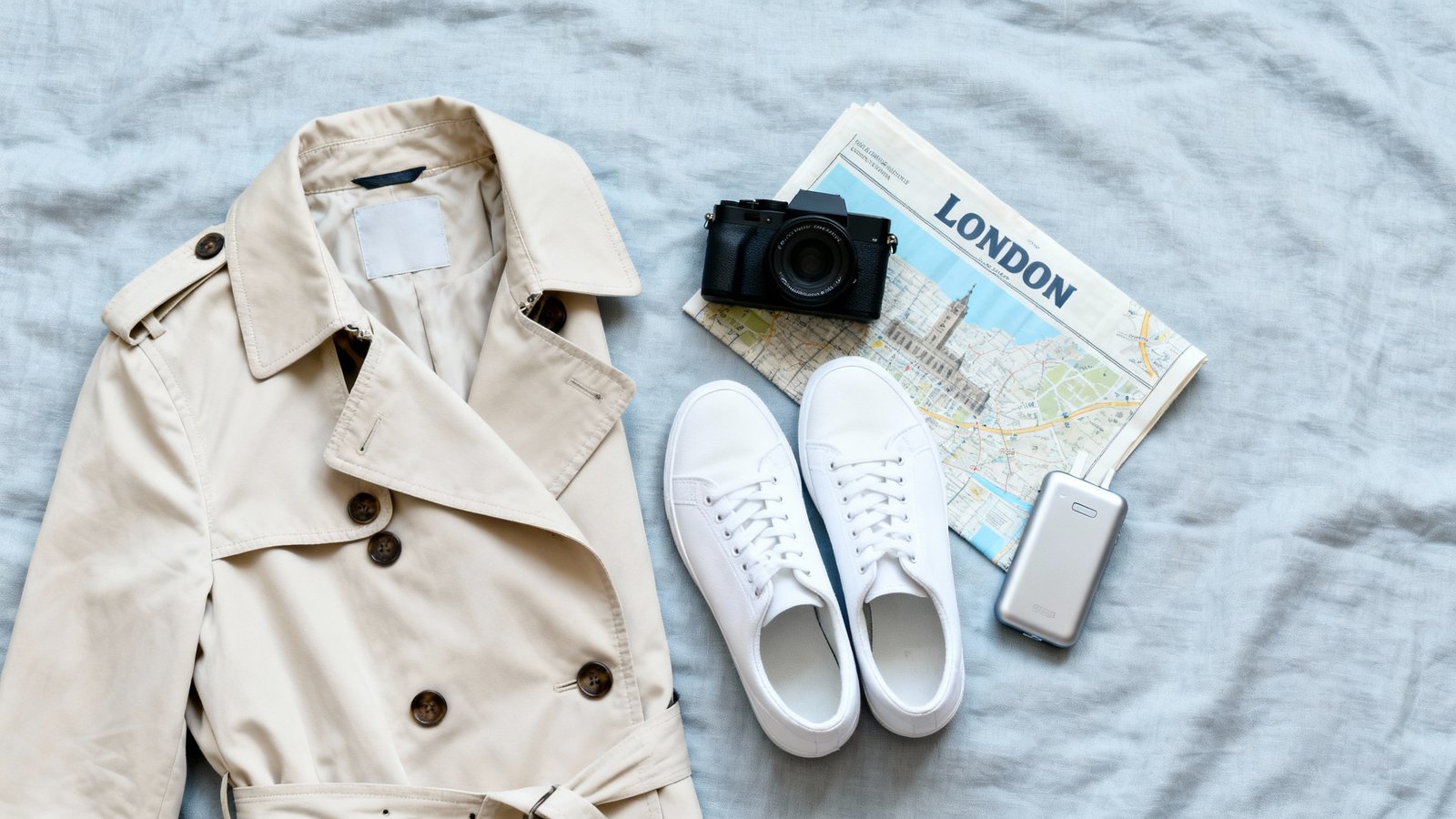
The most important item you will pack is a pair of comfortable walking shoes. You will be doing a lot of walking, and sore feet can ruin a trip. A pair of stylish but comfortable sneakers or flat boots is ideal. If you plan on having a fancy dinner or seeing a show, you might want to pack one smarter outfit, but generally, London is a fairly casual city.
Don’t forget the essentials: a universal travel adapter (the UK uses a three-pronged plug), a portable power bank to keep your phone charged on the go, and a reusable water bottle to stay hydrated and save money. A small backpack or crossbody bag is perfect for carrying your daily necessities while keeping your hands free.
Suggested Hotels for This Itinerary
Where you stay can have a big impact on your London experience. For a 3-day trip, staying central is key to minimizing travel time. The area around Covent Garden and Soho is perfect if you want to be in the heart of the action, with theatres, restaurants, and shops on your doorstep. It’s lively, convenient, and has great transport links.
For a slightly quieter but equally central base, consider South Kensington. This elegant neighborhood is perfect for museum lovers, as it’s home to the V&A, Science Museum, and Natural History Museum. It has a more residential feel but is still just a short Tube ride from all the main sights. Another excellent option is the South Bank and Bankside area, near London Bridge. This gives you easy access to Borough Market, the Tate Modern, and The Shard, plus you’ll have stunning riverside walks right outside your hotel.
There are accommodation options for every budget, from luxury hotels to boutique guesthouses and modern hostels. To get a good overview of what’s available in these prime locations, it’s helpful to browse a comprehensive booking site. A Tripadvisor list of London hotels can help you compare prices and read reviews from fellow travelers to find the perfect spot for your stay.
Hidden Experiences to Add
If you have a little extra time or want to swap out one of the main attractions for something a bit different, London has endless hidden gems to discover. Instead of just viewing the Thames from its banks, why not travel on it? The Thames Clipper is a commuter boat service that offers a fast and scenic way to get between spots like Westminster, the Tower of London, and Greenwich, offering a unique river-level perspective of the city.
For a different kind of view, head to the Sky Garden. Located at the top of the ‘Walkie Talkie’ building, it’s a free public garden with stunning views of London. You need to book your free ticket in advance, but it’s a fantastic alternative to the paid viewing platforms. Art lovers could also visit the Wallace Collection, a stunning (and free) museum in a historic townhouse, filled with art, furniture, and armor, but with a much more intimate feel than the larger galleries.
Finally, don’t underestimate the joy of simply exploring a new neighborhood. Take a walk through the leafy streets of Marylebone, discover the street art in Shoreditch, or explore the historic maritime history of Greenwich. These are the experiences that often become the most cherished memories of a trip.
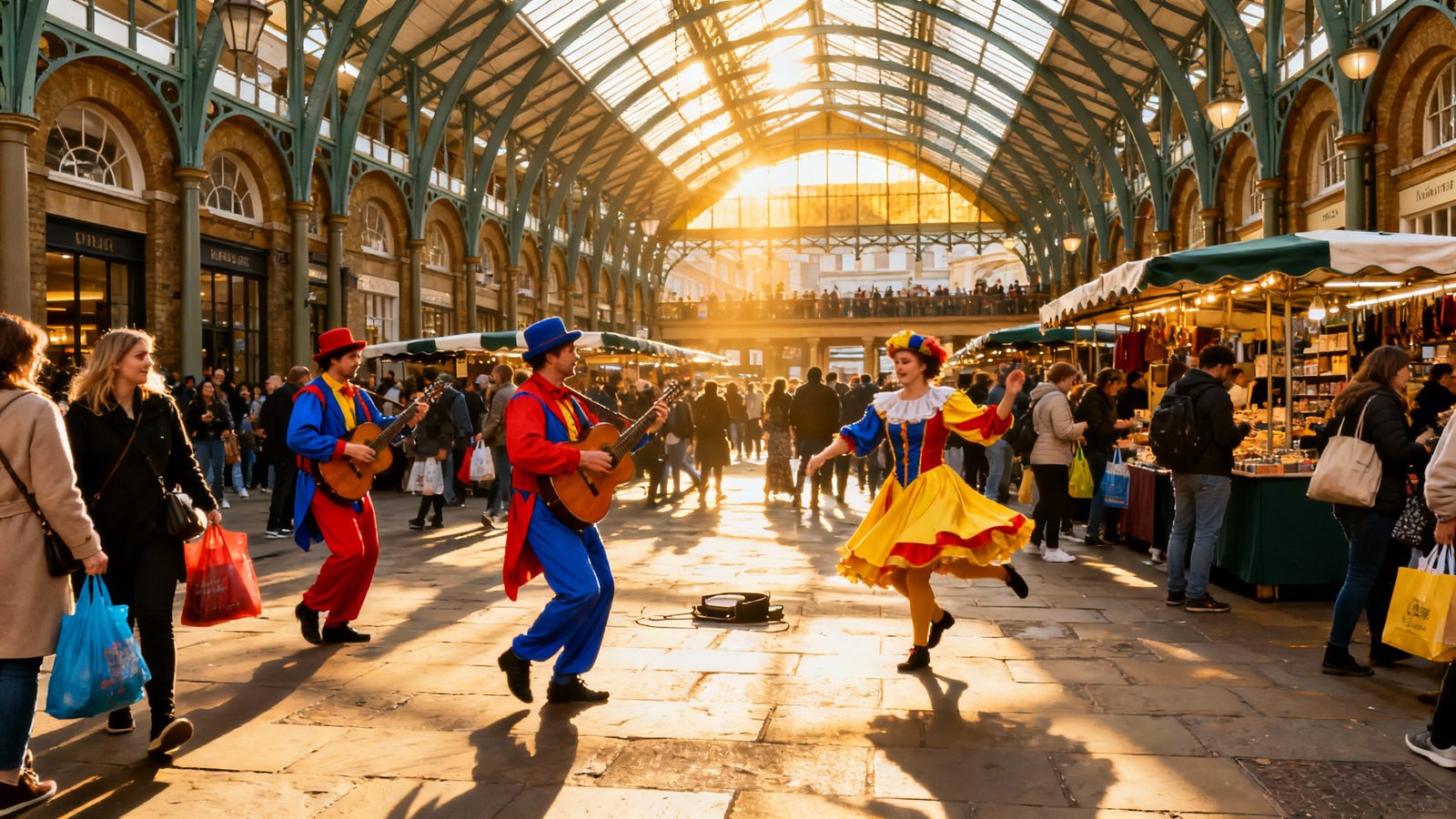
Conclusion
Three days in London is a whirlwind adventure, a captivating journey through time, culture, and creativity. From the regal splendor of Buckingham Palace and the hallowed halls of Westminster Abbey to the vibrant, bohemian streets of Notting Hill and Camden, you’ve experienced the many faces of this dynamic city. You’ve stood before timeless art, cruised down the iconic Thames, and tasted the world in its bustling food markets. London has a unique way of making you feel like you’ve seen so much, yet leaves you wanting to discover so much more.
This itinerary is more than just a schedule; it’s an invitation to connect with the city’s spirit. It’s about the feeling of hearing Big Ben chime for the first time, the taste of a perfectly brewed cup of tea on a rainy afternoon, and the thrill of discovering a hidden alleyway in Covent Garden. London is a city that constantly reinvents itself while fiercely protecting its heritage, and in just three days, you’ve become a part of its ongoing story. We hope this guide has inspired you and shown you that the perfect London adventure is within your reach. When you’re ready to turn this dream itinerary into a reality, you can plan your perfect London adventure with our smart booking tools.
FAQs
Is 3 days enough for London?
Three days is a great amount of time for a first visit. It allows you to see the major highlights, explore a couple of distinct neighborhoods, and get a real feel for the city’s energy without feeling too rushed. You won’t see everything, but it will certainly whet your appetite for a return trip.
What is the best month to visit London?
The best months are typically in the spring (April-June) and autumn (September-October). You’ll enjoy pleasant weather for walking and smaller crowds than in the peak summer months of July and August. However, London is a year-round destination with something to offer in every season.
Should I get an Oyster Card?
While a Visitor Oyster Card is a good option, it’s no longer essential. The easiest and most cost-effective way to pay for public transport is to use a contactless credit/debit card or a mobile payment app (like Apple Pay or Google Pay). The system automatically caps your daily fares, ensuring you always get the best price.
Is London an expensive city to visit?
London can be expensive, but it doesn’t have to be. You can save a lot of money by taking advantage of free museums and parks, eating at street food markets and pubs, and using public transport. Pre-booking attractions and accommodation can also lead to significant savings.
What are some free things to do in London?
London is packed with amazing free attractions. All the major national museums (The British Museum, National Gallery, Tate Modern, Natural History Museum, Science Museum, V&A) are free. You can also watch the Changing of the Guard, walk through the Royal Parks, browse famous markets like Portobello and Borough, and explore neighborhoods on foot.
How safe is London for tourists?
London is generally a very safe city for tourists. Like any major city, it’s important to be aware of your surroundings, especially in crowded areas, to avoid pickpockets. Stick to well-lit areas at night and use common sense, and you are very unlikely to encounter any problems.
Do I need to tip in London?
Tipping culture in London is not as ingrained as in the US. In restaurants, a service charge of 12.5% is often automatically added to the bill. If it is, you don’t need to tip extra. If it’s not, a tip of 10-15% is appreciated for good service. For taxis, it’s common to round up to the nearest pound. Tipping in pubs or for counter service is not expected.


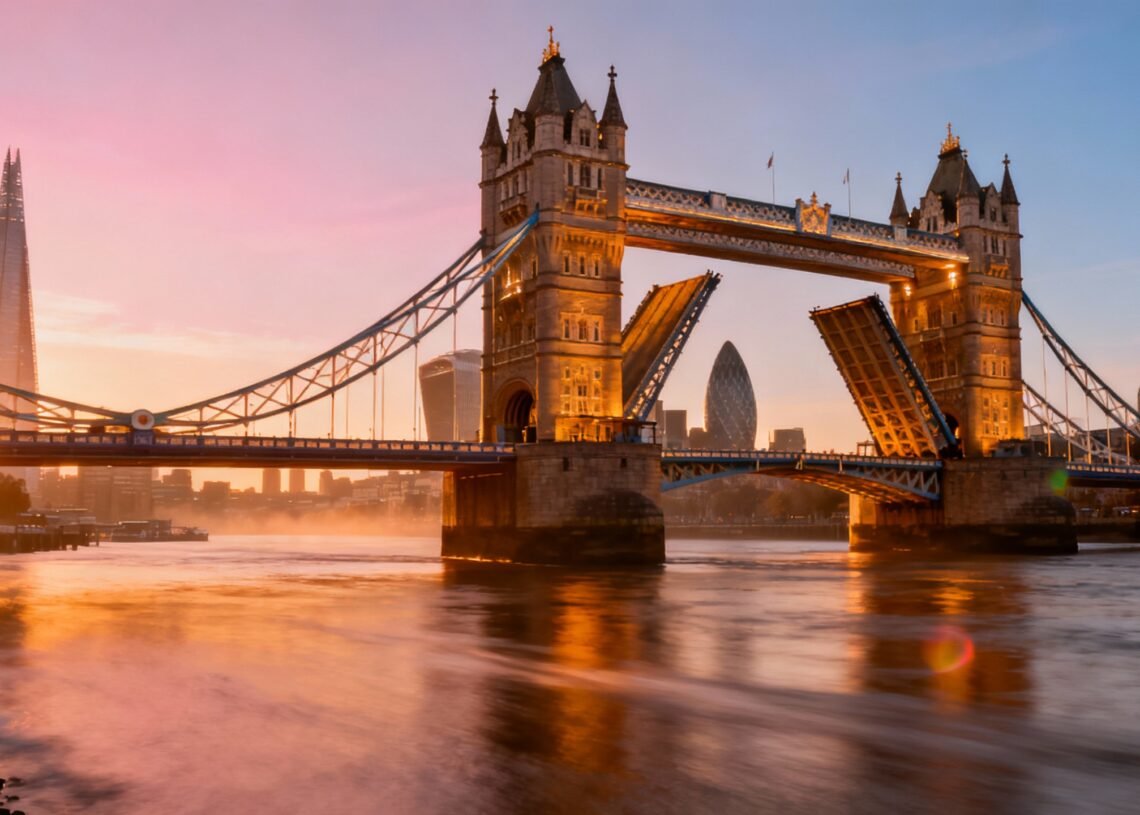
 Introduction
Introduction

